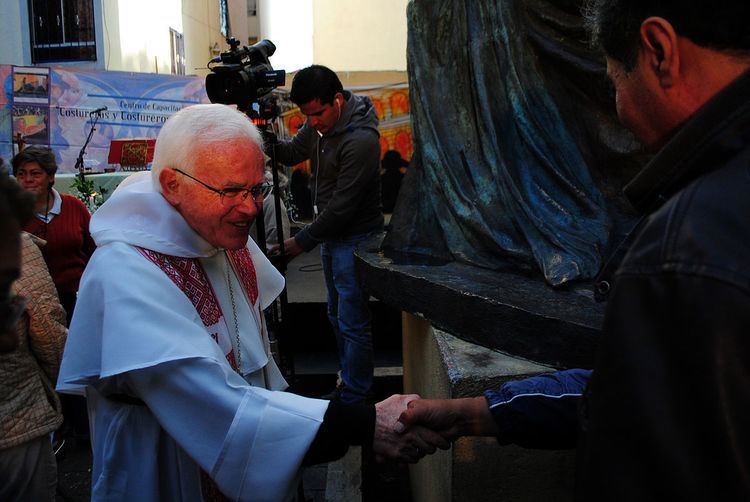 | ||
Pax vobis ("peace to you"), or pax vobiscum ("peace with you"), are Latin salutations in the Catholic Mass and the Lutheran Divine Service.
Contents
Origins
Like the other liturgical salutations (e.g. Dominus vobiscum), the Pax is of biblical origin.
The Gospels (specifically, the Vulgate) contain such forms as "veniet pax vestra", "pax vestra revertetur ad vos" (literally "May your peace return to you"; figuratively "Let your peace rest on you" or "May you be treated with the peace with which you treat others" - Matthew 10:13), "Pax huic domui" ("Peace to this house" - Luke 10:5), "Pax vobis" ("Peace be with you" - Luke 24:36; John 20:21, 20:26). The salutation "Gratia vobis et pax" or "Gratia misericordia et pax" is the opening formula of most of the Epistles of Saint Paul, Saint Peter, and Saint John, as well as in the Book of Revelation.
Liturgical usage
The formula was quoted from the Old Testament by Jesus and his Twelve Apostles, and was preserved in the liturgy and in Christian epigraphy. Like the Dominus vobiscum, it was first used in the liturgy (in the form of Pax vobis) by the bishop in welcoming the faithful at the beginning of the Mass before the Collect or Oratio.
When the Confiteor, Introit and Gloria in excelsis were added at a later period, the Pax vobis and the Dominus vobiscum were preserved. The form Pax vobis was employed by bishops and prelates only at the first Collect, while Dominus vobiscum was used by priests. Hence the Dominus vobiscum became the ordinary introduction to all the orations and most of the prayers. Greeks have preserved the Pax omnibus or Pax vobiscum.
There was a certain rivalry between the two formulae - Pax vobis and Dominus vobiscum - and some councils (notably that of Braga in 561) ordained that both bishops and priests should employ the same form of salutation (for the texts, see the bibliography).
Besides this episcopal or sacerdotal salutation, the words Pax tecum, Pax vobis, or Pax vobiscum are used in the liturgy at the kiss of peace. The two are the same, except that in "tecum the word you is singular, while vobiscum the word is the plural you.
On such occasions the liturgy contains prayers or collects ad pacem. In the Ambrosian Liturgy, at the end of the Mass, the people are dismissed with the words: "Ite in pace". Dom Martene gives other instances of the use of the word Pax.
In Christian epigraphy, there are a variety of formulae: pax; in pace; pax tecum; vivas in pace; Requiescat in Pace; pax Christi tecum sit; anima dulcissima requiescas in pace; dormit in pace; in locum refrigerii, lucis et pacis (from the formula in the Mass at the Momento of the Dead).
